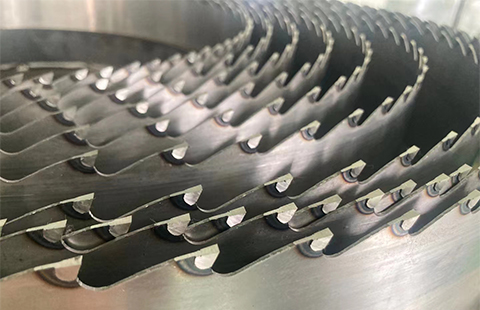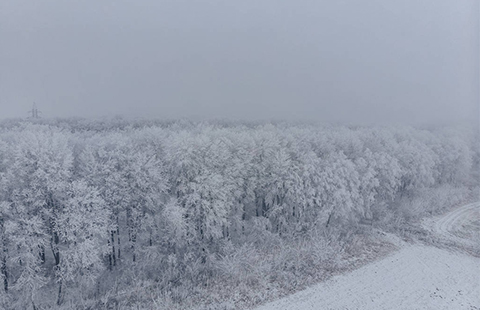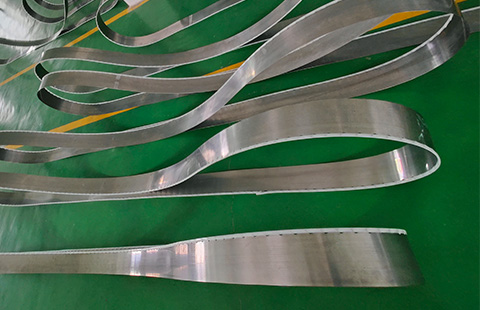Tackling frozen timber demands a blade that's up to the challenge. The icy conditions of frozen lumber can wreak havoc on ordinary saw blades. This article explores the key factors in selecting the ideal bandsaw blade for frozen wood applications.
Why does frozen timber present a cutting challenge?
The freezing process transforms the very essence of wood. As water turns to ice within the wood's cells, it amplifies its hardness and brittleness. This metamorphosis exerts immense pressure on any cutting tool. Standard steel blades falter under the intense cutting dynamics and the heat from friction. Only blades crafted with precision, like those with stellite, can truly master the art of cutting frozen wood.
What blade materials work best?
When it comes to frozen timber, cobalt chrome molybdenum steel, commonly known as stellite is unmatched in performance for it. Its incredible hardness, compression strength, and heat resistance enable stellite blades to cut frozen wood efficiently. Stellite's superior wear resistance and impact strength make it the top choice for professional woodworkers.
What are stellite's advantages?
Compared to high-speed steel, stellite retains its cutting edge up to 10 times longer, a testament to its enduring nature. It also boasts an impact strength that's 3-5 times greater than tungsten carbide, making it adept at handling the vibrations and brittleness of frozen timber. Furthermore, stellite's innate ability to withstand high temperatures ensures it remains unscathed even at elevated cutting speeds.
How Do Carbide and Ceramic Measure Up?
While tungsten carbide offers an edge that outperforms standard steel, it pales in comparison to stellite's enduring nature, especially in frozen conditions. Ceramic blades, despite their impressive hardness, fall short in shock absorption. For a blend of cost-efficiency and reliability, stellite trumps both carbide and ceramic when it comes to frozen timber.
What tooth specifications are important?
Beyond the blade's core material, the design of its teeth plays a pivotal role. Skip-tooth configurations are ideal as they prevent clogging, ensuring wood chips are efficiently expelled. A more expansive gullet size minimizes the strain on individual teeth. The right rake and relief angles fine-tune the cutting motion, minimizing resistance when navigating through dense frozen wood.
What saw sizes work best?
For precision and efficiency when dealing with frozen timber, opt for saws with smaller diameters, such as 6-8 inch bandsaws or 10-inch chop saws. Their slender kerfs and focused force yield neater cuts. In contrast, larger industrial-grade saws might exert excessive force, leading to potential splintering.
How should I maintain blades?
Regularly inspect blades for potential cracks and replace them at the first sign of wear. Employing high-grade coolant is paramount to stave off overheating and expedite chip removal. Periodically clean off any accumulated wood resin. Ensure blades undergo professional sharpening to rejuvenate their performance and store them appropriately to extend their lifespan.
Conclusion
In the realm of frozen timber cutting, stellite's unmatched wear and impact resistance crown it as the undisputed champion. When paired with a meticulously designed blade and maintained with care, stellite bandsaw blades elevate both cutting efficiency and blade longevity.



